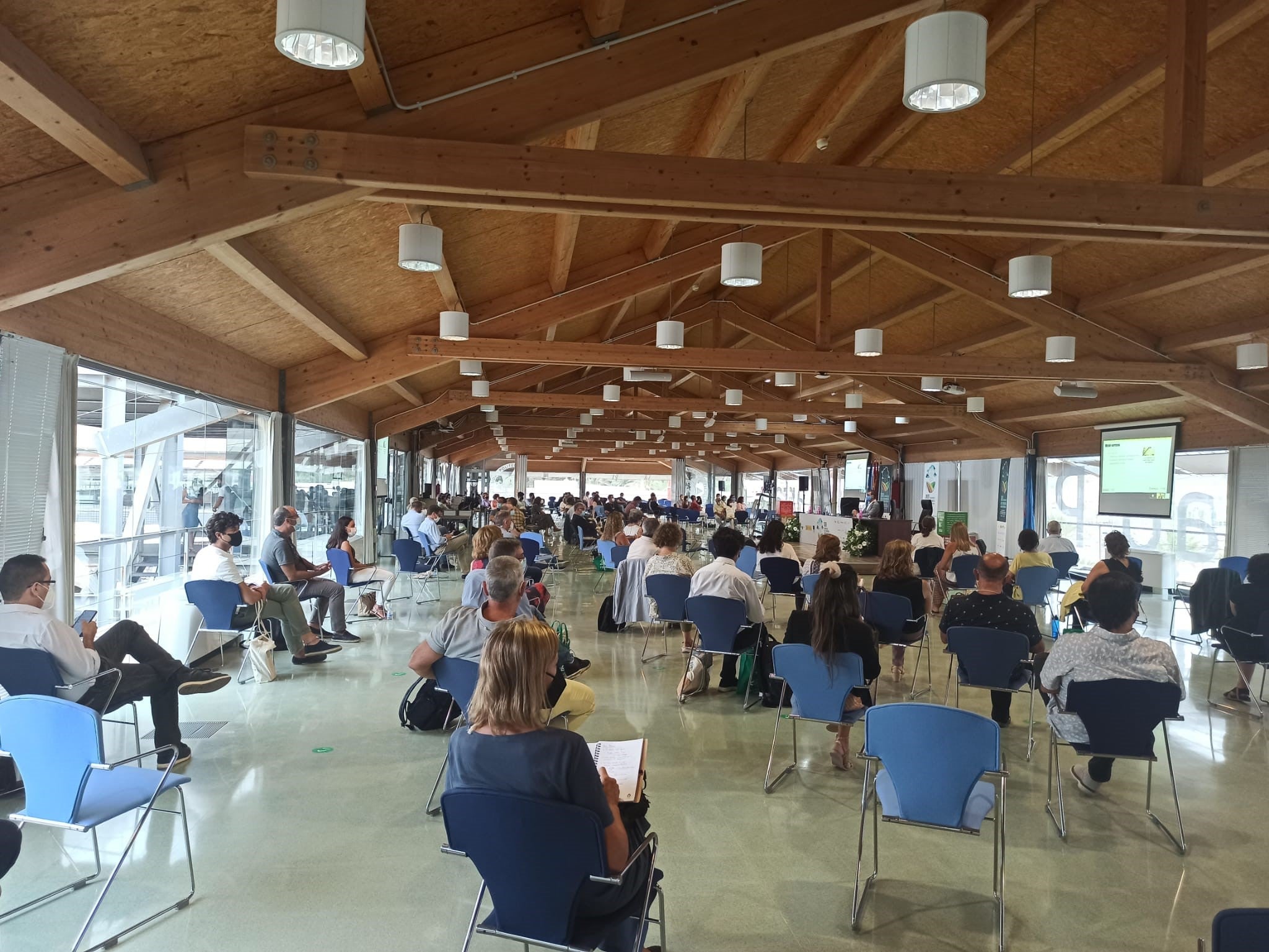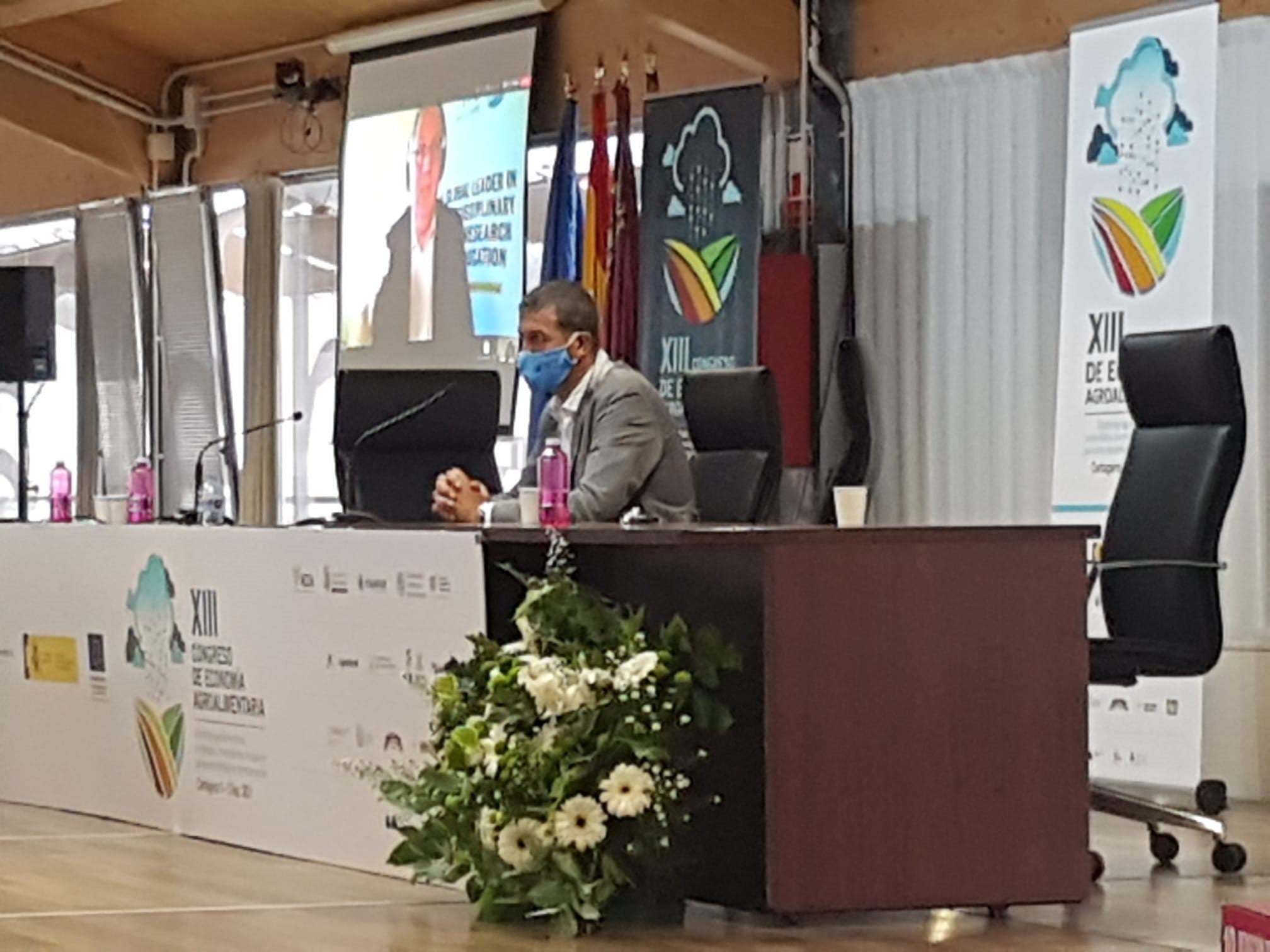The 13th annual Agrifood Economics Congress was held last week 1-3 September in Cartagena, Spain, where agri-food economists, rural development, and environment experts gathered for the hybrid in-person and virtual event.
The mayor of Cartagena and the president of the Polytechnic University of Cartagena gave opening remarks, followed by Water Institute executive director Roy Brouwer, professor in the Department of Economics who was invited to deliver the congress’ first keynote address.
Roy’s presentation examined the relationship between water shortages, increasing costs of irrigation water and food prices, and how factors such as water shortages and environmental deterioration could further impact the cost of food production.
Following the keynote, the press officer Antonio Hernández from the Polytechnic University of Cartagena had the opportunity to interview Roy to discuss some of the critical issues the sector is currently facing. Excerpts from the interview follow below. The University’s press release can be found here.
What impact does the cost of water have on the price of agricultural products?
This question is difficult to answer because it depends on the possibility to transfer the cost increase downstream to consumers. A major concern is that if irrigation water use becomes more expensive, this will either reduce farm household income if the transmission elasticity is low and farmers are unable to pass on the additional costs to consumers downstream in the food supply chain, or reduce demand for food products because they become more expensive if the transmission elasticity is high and consumers do pay for the additional production costs of food. Often part of the costs may be passed on to the consumer, while part may increase the production costs of farmers. Irrespective of the question who will pay which share of the extra costs, food production will become more expensive if we try to internalize the externalities of water use into the price of food production.
Can regions with expensive irrigation water, like Murcia, be competitive in the global agricultural market?
This is what I pointed out at the end of my presentation, and referred to as the need to have a level playing field. If regional and national governments believe that the scarcity costs of water should be better accounted for in food prices, it is important to ensure that this happens in similar ways in different places to avoid unfair competition in local, regional and international food markets.
How important is the use of innovative techniques and technology to reduce water consumption for companies?
Technological innovation and sharing of this technological innovation across river basins and countries is essential to face future water stress. There is a lot of water saving technology available already, in agriculture and also in residential housing for example, but this is not always used in an optimum way. An important reason are the costs of these innovative technologies. But for example also aging water infrastructure and water leakage play a role. Repairing and replacing this aging infrastructure is costly, and existing water pricing mechanisms are ill-equipped to ensure cost recovery from customers or water use beneficiaries. In order to incentivize the diffusion and adoption of these technologies, it is paramount that the private and public sectors collaborate to find ways of making this happen. This includes awareness raising, protocols for knowledge and technology transfer, and available financial resources.
Is the global trend towards greater water scarcity and higher cost for farms?
As shown at the beginning of my presentation, the expectation is indeed that water stress levels will only increase further under climate change. This will increase the social and economic damage costs of droughts and water shortages. These costs are currently already phenomenal as I showed in my slides.
Does the environmental impact of their crops affect the sales of agricultural companies?
Consumers have become increasingly aware of the external costs of food production over the past decades, but the share of organic or sustainable produce in existing agricultural markets remains rather limited in my view. Most of the food we buy in supermarkets is conventionally produced, and not necessarily in a sustainable or organic way. Why? Because in the end what is important to the consumer is also the price of food. It is very difficult to pass on the external costs of food production onto the consumers, because food security is so important (SDG 2). This also applies to the costs of water use and water scarcity. Farmers are expected to produce efficiently and deliver affordable food products to consumers and at the same time protect the environment (responsible/sustainable production – SDG 12). But this is not always possible. There is often a trade-off: It is more costly to produce food sustainably and/or in an environmentally friendly way. And if farmers are unable to transfer this extra cost downstream the food chain to the consumer, there is little incentive for them to do so. Note that most farmers are in my view environmental stewards already, but if they are asked to produce cheap (affordable) food in an economically efficient way, this may come at an environmental cost. In the end society as a whole has to be willing to pay this external cost, not only the farmers.



13th annual Agrifood Economics Congress, Cartagena, Spain